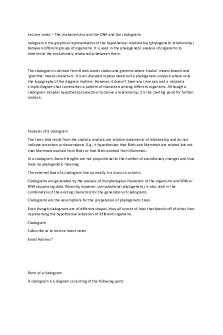Lecture notes – The requires and the adequate and the o2 and the energy source matter PDF

| Title | Lecture notes – The requires and the adequate and the o2 and the energy source matter |
|---|---|
| Course | Biology |
| Institution | San Antonio College |
| Pages | 2 |
| File Size | 36.6 KB |
| File Type | |
| Total Downloads | 4 |
| Total Views | 145 |
Summary
Biology notes are useful foe exams the notes can be used for exam and they can also be used to prepare for your exams!!...
Description
Lecture notes – The requires and the adequate and the o2 and the energy source matter Adequate aeration Optimum temperature 25 – 35oC Adequate soil moisture Adequate exchangeable bases – particularly Calcium (Ca) NPK availability Requires a low C/N ratio
3. Nitrogen Assimilation The next step in the nitrogen cycle is the assimilation of inorganic nitrogen, into organic nitrogencontaining compounds. It is the process by which plants and animals incorporate the NO3– and ammonia formed through nitrogen fixation and nitrification. All organisms assimilate ammonia via two main reactions catalyzed by glutamate dehydrogenase and glutamine synthetase giving rise to the amino acids glutamate (Glu) and glutamine (Gln), respectively. The amino nitrogen in Glu and the amide nitrogen in Gln are then used in further biosynthetic reactions to give rise to other compounds. Glutamate dehydrogenase
Glutamate dehydrogenase catalyzes the reductive amination of the citric acid cycle intermediate αketoglutarate. Although the reaction is reversible, the reductant used in the biosynthetic reaction is NADPH. This enzyme is also involved in the catabolism of amino acids.
Glutamine synthetase
Glutamine synthetase catalyzes the incorporation of ammonia into glutamine, deriving energy from the hydrolysis of ATP. This enzyme is named a synthetase, rather than a synthase because of the reaction couples bond formation with the hydrolysis of ATP. In contrast, a synthase does not require ATP.
Plants take up these forms of nitrogen through their roots and incorporate them into plant proteins and nucleic acids. Animals are then able to utilize nitrogen from the plant tissues.
4. Ammonification
Assimilation produces large quantities of organic nitrogen, including proteins, amino acids, and nucleic acids. Ammonification is the conversion of organic nitrogen into ammonia. Here, organic nitrogen from dead plants and soil organisms is converted to ammonium (NH4+) by mineralization. Mineralization is the decomposition of organic matter to NH4+ which is a useable nutrient ion. Many different soil organisms are involved in the ammonification process including bacteria and fungi. These soil organisms break down organic matter using the carbon and energy produced, but nitrogen is released. Ammonia is also released by the process of excretion into the environment and is then available for either nitrification or assimilation. Fly from Manchester with Singapore Airlines Ad By Singapore Airlines See More 5. Denitrification Denitrification refers to the change (via denitrifying bacteria) of nitrate to gaseous forms of nitrogen such as nitrogen gas (N2) or nitrous oxide (N2O). The process is rapid and large amounts of N2 are lost from the soil system and end up in the atmosphere. This process only occurs where there is little to no oxygen, such as deep in the soil near the water table. Hence, areas such as wetlands provide a valuable place for reducing excess nitrogen levels via denitrification processes. Conditions favoring denitrification:
Lack of adequate O2 Requires energy source of oxidizable organic matter for bacteria Warm, slightly acidic soils....
Similar Free PDFs

The Martian and the Car
- 2 Pages

The Parthenon and the Pantheon
- 4 Pages

The Mughals and the Rajputs
- 2 Pages

The Buddha and the Veda
- 9 Pages

The Fumeri and the marruggio
- 3 Pages
Popular Institutions
- Tinajero National High School - Annex
- Politeknik Caltex Riau
- Yokohama City University
- SGT University
- University of Al-Qadisiyah
- Divine Word College of Vigan
- Techniek College Rotterdam
- Universidade de Santiago
- Universiti Teknologi MARA Cawangan Johor Kampus Pasir Gudang
- Poltekkes Kemenkes Yogyakarta
- Baguio City National High School
- Colegio san marcos
- preparatoria uno
- Centro de Bachillerato Tecnológico Industrial y de Servicios No. 107
- Dalian Maritime University
- Quang Trung Secondary School
- Colegio Tecnológico en Informática
- Corporación Regional de Educación Superior
- Grupo CEDVA
- Dar Al Uloom University
- Centro de Estudios Preuniversitarios de la Universidad Nacional de Ingeniería
- 上智大学
- Aakash International School, Nuna Majara
- San Felipe Neri Catholic School
- Kang Chiao International School - New Taipei City
- Misamis Occidental National High School
- Institución Educativa Escuela Normal Juan Ladrilleros
- Kolehiyo ng Pantukan
- Batanes State College
- Instituto Continental
- Sekolah Menengah Kejuruan Kesehatan Kaltara (Tarakan)
- Colegio de La Inmaculada Concepcion - Cebu










